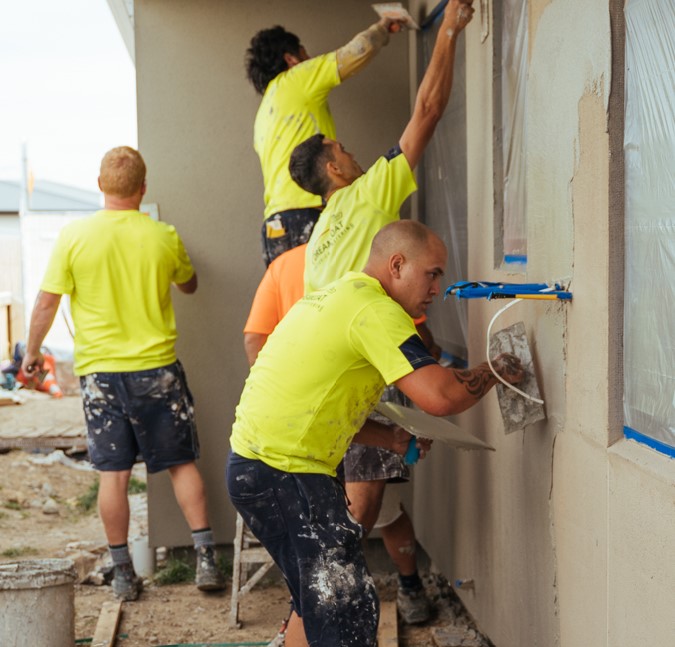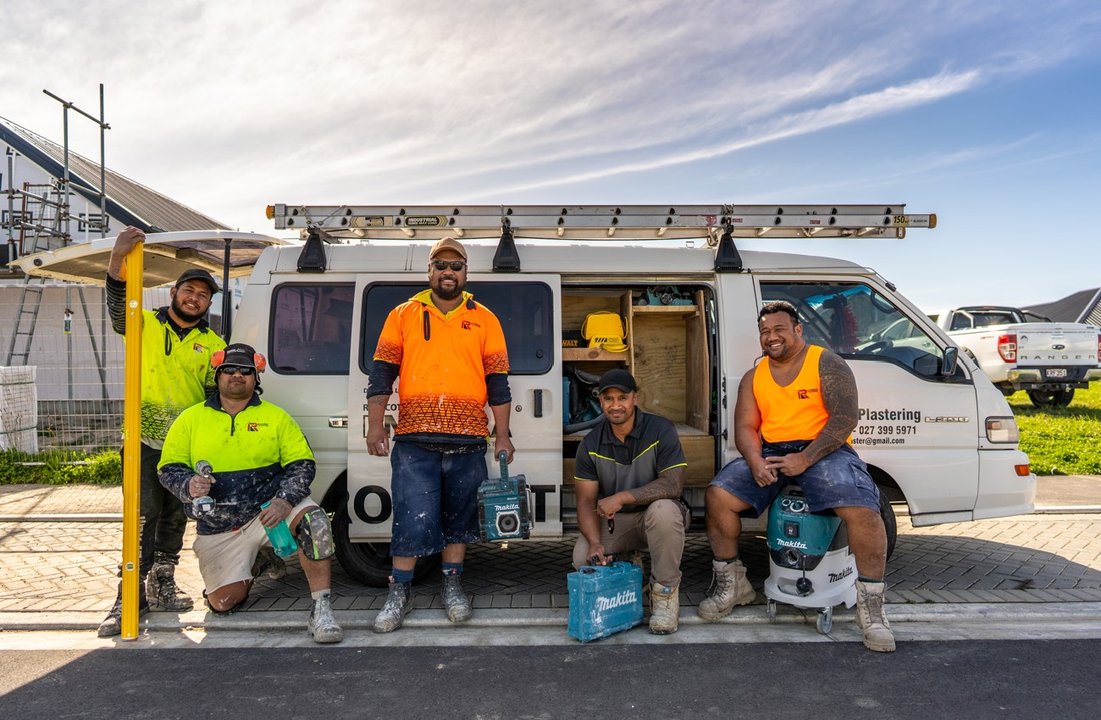
Exterior Plastering
Level 4
1st year $1,338
2nd+ years $910
Plasterers apply the exterior skin to buildings. They have to make sure the finish looks good and is weathertight.

What plasterers do?
Plasterers are required to learn a wide range of skills on the job, from selecting and measuring the right materials to applying and creating the required finish. There are two exterior plaster specialities in New Zealand (some professional plasterers choose to specialise in both):
Solid plaster: Apply protective and decorative coats of sand and cement-based plaster.
PPCS (Proprietary Plaster Cladding System): Install a variety of exterior cladding substrates and finish them with coats of plaster modified to form a 'system' with the particular substrate.

It's not just a job, it's a professional career
Working with plaster isn't just a job – it's a professional career. Much of your work will be contracting to larger firms in the construction industry; you might also get into the retail industry, consulting with clients and other plasterers on products to ensure the aesthetics and finish of a job are up to standard – particularly in relation to weathertightness.
By doing an apprenticeship and getting qualified, you're setting yourself up for ongoing employment as a well-paid tradesperson. You’ll also open up opportunities to do further study in supervision or site management, go to university, or start a business and train your own apprentices.
Plastering qualifications
BCITO manages apprenticeships for exterior plastering. In your apprenticeship you will be working towards one of the following qualifications:
- New Zealand Certificate in Trowel Trades Solid Plastering Level 4
- New Zealand Certificate in Trowel Trades Proprietary Plaster Cladding Systems Level 4
You will work under an experienced plasterer who'll provide on-job coaching and support throughout your apprenticeship. You'll also receive the guidance of a BCITO training advisor.
There are no strict entry requirements, although it will help if you have good maths and English skills – you need to be able to understand instructions and work out measurements, quantities and angles.
Apprentice Fees
Subject
First Year
Remaining Years
Proprietary Plaster Cladding Systems
$1,338
$910
Optional strand
- Fixing Cavities and Substrates
$267 each
Solid Plastering
$1,338
$910
Optional strand
- Decorative Mouldings
$267 each

